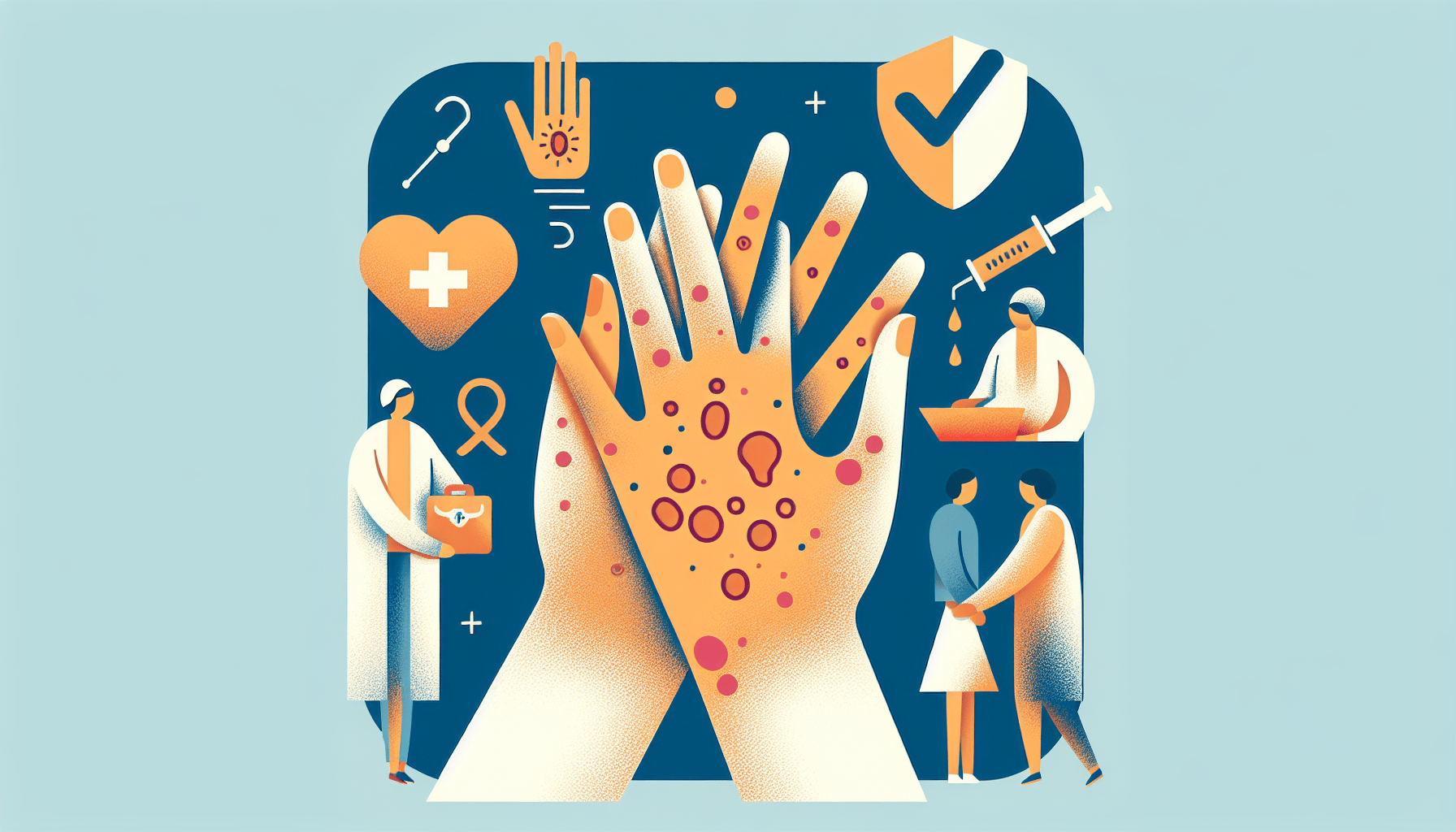Tirzepatide for Sleep Apnea - Can It Help?
Understanding Sleep Apnea and Its ChallengesSleep apnea is a common yet serious sleep disorder characterized by repeated interruptions in breathing during sleep. These pauses [...]
Read More
Medically reviewed by Abhijit Bhattacharyya | MD, PhD, MBA, Tufts University School of Medicine - Miami, Florida on August 10th, 2023.
Tinea manuum, commonly known as ringworm on the hands or athlete's hand, is a fungal infection that can cause discomfort and unsightly rashes. In this article, we'll explore the causes, symptoms, diagnosis, treatment, and prevention of tinea manuum to help you better understand and manage this condition.
Tinea manuum is a type of ringworm infection that specifically affects the hands. Ringworm is a fungal infection that can occur anywhere on the body, and its name is determined by the location of the infection. For example, ringworm on the feet is called athlete's foot, while ringworm in the groin area is known as jock itch.
The symptoms of tinea manuum may include:
A ring-shaped, scaly rash
Itchiness
A clear, scaly, or bumpy center of the ring rash
Slightly raised rings
A round patch of itchy skin
It's important to note that tinea manuum can be difficult to detect, as its symptoms may resemble other skin conditions such as eczema, dermatitis, psoriasis, or dryness. If left untreated, tinea manuum can worsen, causing the skin to crack and blister, potentially leading to bacterial infections.

Approximately 40 types of fungi can cause ringworm, and they thrive in warm, humid environments. You may be at a higher risk of contracting tinea manuum if you:
Live in tropical areas with humid summers
Spend time in humid spaces like locker rooms or indoor pools
Sweat heavily
Participate in contact sports
Live in close contact with other people
Share hygiene products without disinfecting them
Are obese or diabetic
Ringworm can spread through skin-to-skin contact with an infected person, petting an animal with ringworm, touching infected soil, or using objects contaminated with the fungus. It's also possible to spread ringworm from one part of your body to another, such as scratching athlete's foot with your bare hand, resulting in tinea manuum.
Your doctor can diagnose tinea manuum through a physical exam. However, since tinea manuum can be harder to identify, your doctor may take skin scrapings for microscopic examination. In some cases, a culture may be recommended to determine the specific type of fungus causing the infection.
Tinea manuum can often be treated with over-the-counter topical antifungal ointments and creams. However, severe infections may require prescription oral antifungal medications. While treatment may provide immediate relief, it's crucial to continue the prescribed course of treatment to thoroughly eliminate the infection and prevent recurrence.
To prevent contracting and spreading tinea manuum, consider the following tips:
Avoid sharing personal items, and disinfect them if necessary
Treat all ringworm infections simultaneously to prevent secondary infections
Wash your hands frequently to prevent the fungus from spreading
Wear light, loose cotton clothing in humid weather to discourage fungal growth
Keep shared areas, such as gyms and locker rooms, clean
Fully dry your skin after bathing before getting dressed
By understanding the causes, symptoms, and prevention methods for tinea manuum, you can take steps to keep your hands healthy and free from this uncomfortable fungal infection. If you suspect you have tinea manuum, consult with your healthcare provider for an accurate diagnosis and appropriate treatment plan.
For more information on ringworm and other fungal infections, visit:
Understanding Sleep Apnea and Its ChallengesSleep apnea is a common yet serious sleep disorder characterized by repeated interruptions in breathing during sleep. These pauses [...]
Read MoreHeart attacks are often perceived as a predominantly male health issue, but the reality is that heart disease is the leading cause of death for women worldwide. Recognizing [...]
Read MoreTelehealth has transformed the way patients access healthcare, offering convenience, speed, and accessibility that traditional in-person visits often cannot match. With the [...]
Read More